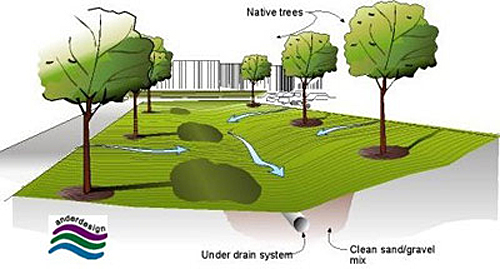The conventional storm-water management system was centered on accumulating storm-water in piped systems and hauling it off-site as soon as could be enabled, either straightforwardly into a stream or waterway, to a comprehensive storm-water management basin, or a consolidated sewer system flowing into a plant for wastewater.
Wet weather green infrastructure and LID (low impact development) address these problems through a selection of techniques like thoughtful landscape planning, strategic website design, and steps to control the sources of runoff. You can get Low Impact Development (LID) Solutions via https://pacificcoastcivil.com/.

Image source google
The wet weather green infrastructure surrounds innovations and approaches to infiltrate, catch, evapotranspire, and reuse storm-water to restore or manage natural hydrologies. LID, on the other hand, focuses to retaliate natural watershed functions with the support of small-scale processing in the runoff source.
o have effective storm-water management systems, it needs to have at least six primary components such as a catchment zone where rainfalls. Numerous systems use roofs to capture rain, but other surfaces such as landscaped areas and pavements could be used rather.
After then accumulated water in the catchment area is moved to the storage space through channels and pipes called a conveyance.
The rain that's collected from roofs may contain debris, which is why a storm-water management system is integrated with a rain washing system to stop it from reaching the storage tanks. The storage facility of stormwater management might have tanks specifically designed to hold 100 to approx 26000 gallons of rainwater.
Stainless steel, polyethylene, fiberglass, galvanized, and even concrete can be utilized to made rainwater tanks. In some cases to stop proliferation and algae formation, these tanks can be found underground.
